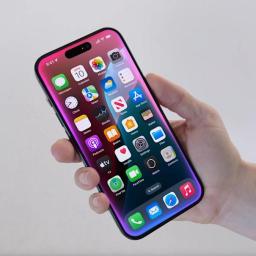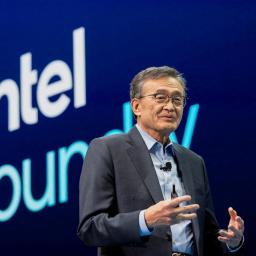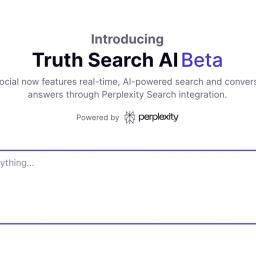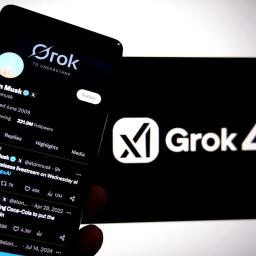 |
by Mariella Moon on (#6Z5T1)
Sonos plans to raise prices across its lineup of products later this year in order to minimize the impact of tariffs on its earnings, the company has revealed alongside its financial results for the third quarter of 2025. It hasn't listed the products and their new prices yet, but it said that it's evaluating any changes it might need to its promotional strategies and that it has flexibility to move production between Vietnam and Malaysia as needed. To note, the Trump administration had imposed a 20 percent tariff on imports from Vietnam and a 19 percent tariff on imports from Malaysia. Sonos also said that it will invest on diversifying its geographic footprint and expanding its presence in markets that represent only a small share of its revenue today to drive growth.A Sonos spokesperson confirmed that not everything in the company's lineup will go up in price, but it sounds like products in its main product categories will get more expensive. We don't yet know the specifics on what products are getting more expensive yet.The company took steps to diversify its supply chain last year, which led to its manufacturing facilities in the two aforementioned countries. It now only relies on Chinese plans for products bound to the US for a limited number of accessories, such as speaker stands. Still, for the third quarter of 2025, tariffs reduced Sonos' gross margin for the third quarter by $2.1 million and its cash flow by $3.5 million. In the fourth quarter of the year, which covers the holiday shopping season, Sonos expects tariffs to reduce its gross margin by $5 million and to remove between $8 to $10 billion from its cash flow.Overall, Sonos posted a revenue of $344.8 million in the third quarter, which is almost $100 million larger than its revenue for the fourth quarter of 2024. It's not a secret that 2024 was a tough year for the company. It rolled out a major update that broke its app, which led to the delay of product releases as it worked to fix the issue. Former Sonos CEO Patrick Spence even stepped down in the beginning of 2025 and was replaced by ex-Snap executive Tom Conrad.Update, August 11, 2024, 11:08AM ET: This story has been updated to note that not all of Sonos' products are getting price increases.This article originally appeared on Engadget at https://www.engadget.com/audio/sonos-is-raising-prices-this-year-to-make-up-for-tariff-expenses-123031336.html?src=rss
|
 Engadget is a web magazine with obsessive daily coverage of everything new in gadgets and consumer electronics
Engadget is a web magazine with obsessive daily coverage of everything new in gadgets and consumer electronics
| Link | https://www.engadget.com/ |
| Feed | https://www.engadget.com/rss.xml |
| Copyright | copyright Yahoo 2025 |
| Updated | 2025-12-26 15:49 |
 |
by Billy Steele on (#6Z8A3)
Unlike two of its biggest rivals, Sony waited until April to unveil its latest soundbars rather than debut them at CES in January. And even then, the two most premium options in the company's 2025 lineup remain untouched. Instead, Sony gave us the Bravia Theater Bar 6 ($650): a 3.1.2-channel Dolby Atmos soundbar that comes with a wireless subwoofer and a modest set of features. However, the caveats here are real headscratchers, especially on a soundbar launching this year. What's good about the Bravia Theater Bar 6? Overall sound quality has never been an issue on the Sony soundbars I've tested, and the Theater Bar 6 continues with that trend. You can expect crisp, warm sound with excellent clarity and solid directional audio. Even over Bluetooth, this speaker-sub combo is great for music, doing justice to the subtle details of Miles Davis' Mies 54: The Prestige Recordings. Classic jazz is a great way to judge a speaker's merits, and on the Bar 6, this recently remastered album is dynamic and inviting throughout all 20 tracks. The soundbar also delivered great audio in movies and TV. I was sucked into battle scenes during the second season of Andor, even though the limitations of the Theater Bar 6's 3.1.2-channel configuration quickly became apparent. Its five-driver arrangement does well, thanks to three front-firing units and two angled up-firing speakers. Those latter two components really help with filling the overhead space during the action in shows like Andor, compensating for the limited number of drivers (and their positioning) as much as possible. And all of that makes the Theater Bar 6 a solid option for smaller spaces, especially if you have lower ceilings and won't be sitting far from the TV. The Theater Bar 6 won't win any design awards, but that's okay. There are plenty of people, myself included, who don't really want their soundbar to stand out on the TV stand or mantle. The focus should be the display, not the speaker. This model is quite plain, but it also has a relatively low profile, so even if your TV has a short stand, the Theater Bar 6 won't block the picture. What's not so great about the Bravia Theater Bar 6? Billy Steele for Engadget The first strike against the Bravia Theater Bar 6 is the lack of Wi-Fi connectivity. If you want a wireless connection to the soundbar, Bluetooth is your only option. What's more, no Wi-Fi means no AirPlay, Chromecast or Spotify Connect - all of which should be standard on a $650 model in 2025. Sony did make it easy to switch from the HDMI input over to Bluetooth in the Bravia Connect app, and that change happens quickly after you've paired your phone with the soundbar once. Speaking of the app, it doesn't actually help you install firmware updates to the Theater Bar 6. Instead, it prompts you to transfer the files from a computer to a thumb drive to get them to the soundbar. Yes, really. Sony says the lack of Wi-Fi is why this workaround is required. No matter the reason, having to dig a thumb drive out of your junk drawer to install updates is a big inconvenience, and it shouldn't really be a thing in the mid 2020s. In the sound department, the only real knock against the Theater Bar 6 is more about the constraints of 3.1.2-channel audio. Even with Dolby Atmos and DTS:X content, this system will be limited in its abilities to deliver immersive sound. Sure, Sony's S-Fore Pro and Vertical Surround Engine do well to virtualize a more robust living room setup, but that tech only goes so far. You might think a pair of rear speakers would bolster the sound, and Sony does offer the Bravia Theater System 6 ($770) as a 5.1-channel all-in-one package. However, it doesn't include the Theater Bar 6 and its subwoofer. Instead, that bundle comes with a different soundbar that doesn't have up-firing drivers, which means it might lack overhead sound and dampen the impact of immersive content. Unfortunately, if you want to add rear speakers to the Theater Bar 6, you're out of luck. None of Sony's currently available options are compatible with this soundbar. Lastly, and this isn't a huge issue for most people, but the Theater Bar 6's included subwoofer is big. Bigger than most of the competition? No, but it's large nonetheless. I'll admit I've been spoiled by the QS700F that I recently reviewed, thanks to its subwoofer's compact design. But if speakers in this category start trending smaller, the one that accompanies the Bar 6 will definitely end up being one of the chunkier models. Wrap-up The up-firing speakers assist with Dolby Atmos. Billy Steele for Engadget From a pure sound quality standpoint, the Theater Bar 6 excels at both its music and TV duties. Sure, it's limited by its 3.1.2-channel configuration, but there's a definite use case for that type of setup - especially if you're short on living room space. The audio is crisp and clear, and it's also warm and inviting, which makes this soundbar well-suited for all kinds of content. Despite my heaping on all of that praise, the Bar 6 simply has too many drawbacks that I can't overlook. The lack of Wi-Fi on a $650 soundbar is absurd, mostly because it strips users of the convenience of AirPlay, Chromecast and other wireless connection options. I also can't get over the need to use a thumb drive for updates when OTA downloads for new firmware have been the norm on soundbars for years. For those reasons, the Samsung QS700F is the better option in this price range since it combines great sound with an orientation feature that automatically recofigures the output direction based on placement. Sony and Samsung are in a tight race in regards to audio performance with the Theater Bar 6 and the QS700F, but only one of those 2025 soundbars will save you from some headaches.This article originally appeared on Engadget at https://www.engadget.com/home/home-theater/sony-bravia-theater-bar-6-review-great-sound-greater-frustration-144512450.html?src=rss
|
 |
by Steve Dent on (#6Z8A4)
Despite the impending loss of federal rebates, Ford plans to give US EV production a huge boost. After hyping it last week as a "breakthrough" and "Model T moment," the company has announced the Ford Universal EV Platform to be shared by a new family of products. The first of those will be a midsized pickup with a starting price of around $30,000, likely similar in configuration to the popular Maverick. It will use the company's upcoming prismatic LFP (lithium iron phosphate) batteries.Ford will invest $5 billion, including $2 billion at its Louisville, Kentucky factory on top of $3 billion already announced for its BlueOval battery plant. It will expand the Louisville facility by 52,000 square feet and "create or secure" nearly 4,000 direct jobs, Ford added.Ford's only two EVs right now are the F-150 Lightning and Mustang Mach-E, both of which use one-off platforms. With the Universal EV Platform, Ford will be able to build multiple vehicles including vans, cars and pickups that should be easier to build and thus cheaper. "The result: a simple, efficient, flexible ecosystem to deliver a family of affordable, electric, software-defined vehicles," the company said.Ford said that the platform will reduce parts by 20 percent versus a typical vehicle, with fewer fasteners and workstations and a 15 percent quicker assembly time. The company is also promising a lower cost of ownership over five years "than a three-year-old used Tesla Model Y."FordThe company also touted its LFP prismatic batteries as enabling space and weight savings along with cost reductions, due to the cobalt-free and nickel-free composition. However, the company's choice of LFP for its next-gen EVs has not been without controversy. Since Ford is licensing tech from China's CATL, it may lose out on tax credits of up to $700 million if Congress passes a bill banning federal support for battery plants that use tech or materials from China.The first vehicle will be a mid-sized four-door electric pickup set to launch in 2027. Ford hasn't yet revealed the name or shown a photo, but it will supposedly have more room than Toyota's latest RAV4 without even counting the frunk and truck bed. Buyers will be able to lock gear like bikes or surfboards into that bed, eliminating the need for roof or trailer hitch racks. It will have a low center of gravity from the battery, instant torque and a 0 to 60 mph time "as fast as a Mustang EcoBoost [around 4.5 seconds], with more downforce," Ford said.Ford hasn't detailed other vehicles that will be built on the platform, but an animation shows a variety ranging from utility vans to crossovers to SUVs to sedans, along with the aforementioned pickup. One rumor states that the new pickup could be called the Ranchero (based on a trademark filing) or it may use the Ranger name. In any case, it's clearly a big deal for Ford, since the company will have no less than three announcements for it. More info for the midsized electric truck, including reveal date, starting price, battery range and charge times "will be communicated later," Ford simply said.This article originally appeared on Engadget at https://www.engadget.com/transportation/evs/ford-is-developing-a-30000-midsized-ev-pickup-143030877.html?src=rss
|
 |
by Sarah Fielding on (#6Z87M)
The debate over whether AI chipmakers should be allowed to sell their products to China has taken an unusual turn. The US government has reportedly given NVIDIA and Advanced Micro Devices (AMD) permission to make the sales but for one big catch: 15 percent of the sales. The news was first reported by The Financial Times, which cited multiple people familiar with the agreement.In July, NVIDIA announced that the US government would approve export licenses to sell its H20 AI GPUs after blocking their sale in April. NVIDIA created these specific chips - which are less powerful than ones sold in the US - in response to restrictions on sales to China. It previously developed the A800 and H800 chips for the Chinese market, but those were also banned.Now, NVIDIA and AMP were both reportedly granted export licenses for China last week, after agreeing to give the government 15 percent of their profits. AMP will provide the share from sales of its MI308 chip.There's significant debate over whether selling AI chips to China will endanger US national security. At the end of July, 20 national security experts and past government officials - including President Trump's former deputy national security advisor, Matt Pottinger - wrote a letter to Howard Lutnick, the US Secretary of Commerce, stating as much.The signatories "believe this move represents a strategic misstep that endangers the United States' economic and military edge in artificial intelligence." They worry it will restrict the number of chips available for the US and be used by China's military, among other concerns. NVIDIA disagrees, claiming the export licenses will allow it to compete with Chinese businesses.This article originally appeared on Engadget at https://www.engadget.com/ai/nvidia-may-give-us-government-a-cut-of-its-profits-to-sell-ai-chips-to-china-120003260.html?src=rss
|
 |
by Valentina Palladino on (#5MBXN)
Sure, you've remembered to pack the most important things as you prep to go back to campus for the new semester. But the little things can get you in college. It's not uncommon to discover that, a few days into your new class schedule, you forgot to pack small things like an extra charger, a portable battery pack or a beater pair of earbuds. These unassuming things can make a big difference in how you work and play while at college, so do yourself a favor and think about all the small things you need to make this semester your best one yet. To prevent you from playing catch-up, we've compiled the best gadgets for school under $50 so you can cross the most crucial ones off your list before you even set foot on campus. This article originally appeared on Engadget at https://www.engadget.com/school-tech-under-50-140026676.html?src=rss
|
 |
by Jackson Chen on (#6Z7T9)
It may have been decades since you last heard the crunching screeches of connecting with dial-up Internet, but AOL said it will discontinue its dial-up service on September 30, officially marking the end of an era in Internet history. As first spotted by PC Gamer, AOL made the surprising announcement in a post buried in its AOL Help pages. Along with the dial-up service, AOL Dialer software and AOL Shield browser will also be discontinued by the end of September.It may come as a shock to most that AOL still runs its dial-up Internet service, but some thousands of users still rely on this outdated method as an affordable way to access the Internet in more rural areas. However, these user numbers in the "low thousands" are a far cry from AOL's heyday, which reportedly saw tens of millions of subscribers, most likely thanks to the stacks of free trial CDs people would find in their mailboxes. Nowadays, dial-up Internet fails to compete against the likes of much faster broadband options, which include cable, fiber and satellite alternatives.Even though AOL's dial-up service eventually lost relevancy, it stuck around for 34 years before meeting the same fate as other '90s tech icons like Blockbuster, Discmans and AOL Instant Messenger. Now, the only time you'll really hear that iconic America Online serenade is through recreations on social media.AOL is part of the company that owns Engadget. No one outside of Engadget's editorial team has any say in our coverage of the company.This article originally appeared on Engadget at https://www.engadget.com/computing/aols-dial-up-internet-still-exists-but-not-for-much-longer-193004233.html?src=rss
|
 |
by Jackson Chen on (#6Z7TA)
A Siri that does way more than just setting a timer or writing down a reminder may still be nearly a year away. According to Bloomberg's Mark Gurman, Apple plans to release an overhauled version of Siri in the spring, which will be enhanced by the new App Intents feature. Gurman reported that the upgraded Siri will handle more complex tasks within apps, like commenting on an Instagram post, adding an item to your cart in a shopping app or editing a specific photo and sending it afterwards.After a disappointing delay, Apple is playing catch-up to deliver on previous claims of an improved Siri. According to Gurman, the company is testing App Intents with its own apps, but also third-party apps, including AllTrails, Amazon, Facebook, Threads, Temu, Uber, WhatsApp and YouTube. For apps that handle more sensitive info, like banking apps, Gurman said that Apple may look into certain restrictions or completely avoid these apps for App Intents.Apple gave us the first glimpse of this smarter Siri during WWDC 2024, where Apple Intelligence was the focus of the annual conference. However, the company delayed the release for the updated Siri in March, explaining that "it's going to take us longer than we thought to deliver on these features" and adding that the upgrades be rolled out "in the coming year." Apple even got sued for false advertising after releasing a TV ad featuring Bella Ramsey that showed off Siri's new capabilities that weren't available to the public following the release of the iPhone 16.This article originally appeared on Engadget at https://www.engadget.com/ai/an-updated-siri-that-interacts-with-apps-reportedly-wont-be-here-until-next-spring-183000378.html?src=rss
|
 |
by Cheyenne MacDonald on (#6Z7SB)
Rod Fergusson, the general manager of the Diablo franchise for the last five years, is leaving Blizzard. Fergusson announced the move on social media, but didn't say where he's going next. Before joining Blizzard in 2020 to lead Diablo, Fergusson was studio head at The Coalition, where he oversaw Gears of War."After five years driving the Diablo franchise with four big launches, it's time to step away from Blizzard/Microsoft, sword in hand, and see what's next," Fergusson wrote in a post on Bluesky. "I'm proud of what we've built and excited for what's ahead for Diablo, and for me." His departure comes after significant layoffs this summer at Microsoft, Blizzard's owner, which affected its gaming division.In a reply to Fergusson's announcement, Xbox head Phil Spencer posted, "You brought strength, hellfire, and vision to one of gaming's most iconic franchises. Playing Diablo IV with you was a blast-thanks for everything you gave to the game and the community."This article originally appeared on Engadget at https://www.engadget.com/gaming/rod-fergusson-leaves-blizzard-after-five-years-leading-diablo-180049767.html?src=rss
|
 |
by Jackson Chen on (#6Z7SC)
A post on Ubisoft's news page reportedly announced that FX is working on a TV show adaptation of the Far Cry franchise. The page has since been taken down and entering the website redirects to Ubisoft's landing page for company news. However, several Redditors have been circulating what they saw in the press release.According to the alleged Ubisoft post, the Far Cry franchise adaptation will be an "anthology drama" where "each season will be set in a new world with a different cast of characters following the video game franchise's signature standalone storytelling format." The series is reportedly being co-created by Rob Mac, known for creating and starring in It's Always Sunny in Philadelphia, and Noah Hawley, who created Fargo and Legion for FX. The leaked release supposedly detailed that Hawley will serve as the showrunner for the series, while also filling the role of executive producer along with Mac. Several production studios have reportedly joined the project, including Ubisoft Film & Television, which is working on other video game adaptations for the Assassin's Creed and Tom Clancy's Splinter Cell franchises.While FX hasn't confirmed anything officially, the leaked cast and crew could be a sign of the next big hit in the world of video games adapted into TV. The recent success ofFallout and The Last of Us indicates a healthy appetite from viewers and Hawley's previous experience could be an appropriate fit for the Far Cry franchise's raw, but darkly comedic style.This article originally appeared on Engadget at https://www.engadget.com/entertainment/tv-movies/ubisoft-may-have-prematurely-revealed-fxs-tv-adaptation-of-far-cry-162918984.html?src=rss
|
 |
by Cheyenne MacDonald on (#6Z7EA)
It's been a few years since we last heard anything about the Space Invaders movie that is reportedly in the works, but a new report suggests things are inching forward again. According to Deadline, Ben Zazove and Evan Turner (The Out-Laws) are now on board to write the movie for Warner Bros.' New Line Cinema.A movie adaptation of Taito's classic arcade game has been brewing for over a decade now, after Warner Bros. bought the rights to spin it into a film back in 2014. It was reported in 2019 that screenwriter Gregg Russo (Mortal Kombat 2021) had been tapped to write the script, but it seems some changes have been made in the years since. There's no word yet on a release date or how it'll approach the alien invasion story. Video game adaptations have been having a bit of a moment lately, though, so they may be looking to ride that momentum and actually bring this one to life now. Time will tell.This article originally appeared on Engadget at https://www.engadget.com/entertainment/tv-movies/the-space-invaders-movie-is-apparently-still-happening-210851306.html?src=rss
|
 |
by Jackson Chen on (#6Z7DE)
DJI's obstacle avoidance system could be just as useful on land as it is in the air. DJI, known for its dominance in the drone market, has entered the smart home world with a range of robot vacuums called ROMO. Beyond its drones, gimbals and action cameras, the Chinese company previously branched out into other product categories, including portable power stations and e-bikes.For those wondering why DJI settled on robot vacuums as its next venture, it makes sense considering the company's "omnidirectional obstacle sensing" found in its drones. The same system that helps DJI drones avoid crashes when capturing cinematic footage easily translates into a robot vacuum that can navigate a home without running into furniture. Along with obstacle detection that can measure down to millimeters, DJI built its ROMO models with two flexible cleaning arms, an extremely high 25,000 Pa suction and a base station that the vacuum will automatically dock and clean itself in.To make it more efficient, DJI packed in machine learning algorithms that help the ROMO vacuums figure out the best route for cleaning. The onboard intelligence can even detect if an area is especially dirty and spend more time there. To make it less of a nuisance, the ROMO uses a noise reduction system while vacuuming and you can control it hands-free with voice commands.DJIDJI is offering the ROMO in three models: the entry-level ROMO S that starts at around $650, the midrange ROMO A with a transparent vacuum design that goes for around $750 and the top-of-the-line ROMO P that has both a transparent vacuum and base station for at least $950. DJI is releasing the ROMO to China first, but says overseas availability is coming later this year. While robot vacuums don't pose as much of a security risk as drones, DJI is currently trying to figure out how to avoid a ban in the US when the National Defense Authorization Act goes into effect at the end of this year. Unless DJI is audited and cleared by one of the US' national security agencies by then, any new DJI drones would be blocked from being imported or sold in the US.This article originally appeared on Engadget at https://www.engadget.com/home/smart-home/dji-repurposed-its-drones-obstacle-detection-tech-for-robot-vacuums-191136030.html?src=rss
|
 |
by Jackson Chen on (#6Z7CD)
Following the rollout of OpenAI's latest GPT-5 model earlier this week, a certain user base was adamantly calling for the return of the previous GPT-4o model. Outspoken users complained about the writing quality of the updated model, with some even going so far as to grieve the loss of GPT-4o, which some said they considered a friend and confidant.In the latest OpenAI update that labels GPT-5 as the "smartest, fastest, most useful model yet," the company removed the option to choose which model to use and defaults to GPT-5 instead. With the new model, GPT-5 uses a "real-time router" that switches between a more efficient model for basic questions and a deeper reasoning alternative for more complex demands.The initial rollout ran into some issues that made GPT-5 seem "way dumber," according to OpenAI's CEO Sam Altman, who also opened up a Reddit AMA to offer more insight into the changes. On Reddit, Altman responded to a question by saying GPT-5's writing quality is better than previous models, but asked users if this felt true. In response, several Redditors voiced their opinion that the GPT-5 felt "sterile" and "much worse" and answered "briefly and dryly." In response to the initial outcry, Altman posted on X that OpenAI would let Plus subscribers choose between using GPT-5 or GPT-4o."We for sure underestimated how much some of the things that people like in GPT-4o matter to them, even if GPT-5 performs better in most ways," Altman said on X.The return of GPT-4o was celebrated, but there's still no guarantee that OpenAI will keep its older model around indefinitely. In the same X post, Altman said that OpenAI "will watch usage as we think about how long to offer legacy models for." In the meantime, OpenAI is focusing on finishing the GPT-5 rollout and making changes that will "make it warmer." However, for users who have grown attached to GPT-4o as more than just an AI chatbot, this could be the beginning of the end.This article originally appeared on Engadget at https://www.engadget.com/ai/openai-brings-gpt-4o-after-users-melt-down-over-the-new-model-172523159.html?src=rss
|
 |
by Mariella Moon on (#6Z79N)
The astronauts part of SpaceX's Crew-10 mission are on their way back home. Their Dragon capsule called Endurance is scheduled to splash down at approximately 11:33 AM Eastern time off the coast of California. Endurance undocked from the International Space Station at 6:15PM Eastern on August 8 with NASA astronauts Anne McClain and Nichole Ayers, Japan Aerospace Exploration Agency (JAXA) astronaut Takuya Onishi and Roscosmos cosmonaut Kirill Peskov onboard. They stayed on the ISS for five months and left a week after Crew-11 arrived to take their place.While they were on the space station, Crew-10 helped expand our knowledge on the physiological and psychological changes humans undergo on long-duration missions that range from weeks to a year. They also observed how blood flows from the brain to the heart in microgravity, among the other studies and experiments they conducted.As NASA notes, this will be its first Commercial Crew mission to splash down into the Pacific Ocean, as previous capsules splashed down off the coast of Florida. NASA will broadcast the crew's return, with its coverage starting at 10:15AM today, August 9. You can watch Endurance splash down into the ocean on NASA+ or on the YouTube video embedded below. NASA will also hold a teleconference after retrieving the astronauts and will broadcast the event on its website.This article originally appeared on Engadget at https://www.engadget.com/science/space/watch-nasas-spacex-crew-10-astronauts-return-to-earth-133004329.html?src=rss
|
 |
by Kris Holt on (#6Z78R)
Welcome to our latest recap of what's going on in the indie game space. This week, Nintendo held its latest Indie World showcase to spotlight titles that are coming to Switch and Switch 2, as well as some that arrived on the eShop on the day of the presentation.One of the latter was UFO 50, which featured on many best of 2024 lists after it debuted on PC. Another was Is This Seat Taken?, which is about placing picky people in the right seats. This chill puzzle game from Poti Poti Studio and publisher Wholesome Games Presents arrived on Steam, iOS and Android as well this week. It has a look that reminds me a little of last year's pretty platformer, Schim.Looking further ahead, the Indie World revealed the October release date for Ball x Pit, a Breakout-esque roguelite I'm very excited for. In addition, Mina the Hollower, the next game from Shovel Knight studio Yacht Club Games that we already knew was coming to Steam on Halloween, has been confirmed for a Switch and Switch 2 release on the same day.The showcase also revealed that Neverway, a creepy life-sim RPG from a studio founded by Pedro Medeiros (the pixel artist of Celeste) and Murder Engine creator Isadora Sophia, is coming to Switch and Steam in 2026. Meanwhile, sci-fi RPG Caves of Qud is coming to Switch as a console exclusive later this year. This is a turn-based, sci-fi roguelike RPG from Freehold Games and publisher Kitfox Games that's rated overwhelmingly positive on Steam after nearly 10,000 player reviews (a quick scan indicates that those who get into Caves of Qud can sink hundreds of hours into it).Elsewhere, The International Game Developers Association, The International Game Developers Association Foundation and Women in Games International teamed up for an interesting announcement this week. The organizations are collaborating on a project called Port Quest, which is designed to help successful developers bring their games to mobile platforms. Studios who take part can receive assistance from industry veterans, access to workshops and more.Applications are open now and will close on September 15. Those chosen to participate will be featured in a showcase. However, only games that have earned at least $10,000 per month for the last six months are eligible. The games can't have previously been made available on mobile devices either.New releasesA game called Ritual of Raven, from Spellgarden Games and publisher Team17, arrived on Steam and Switch this week. It's billed as a "cozy, story-based farming sim" but you're not going to be making your character till the land, plant seeds and carefully nurture crops here.Instead, this is more of a deckbuilder, as you'll collect tarot cards and make use of their magical powers to do the work for you. It seems like an interesting twist on the Stardew Valley formula, especially if you're into card-based games.Kimchi: A Stars in the Trash Story is a free, short game from Valhalla Cats that dropped this week on Steam and Itch.io - just in time for International Cat Day. As a kitten named Kimchi, you'll explore a cat museum and solve puzzles as you learn about the history of cats.This is a spinoff of Stars in the Trash, a hand-drawn platform adventure with a gorgeous aesthetic that came out late last year. I bought that game months ago but haven't gotten around to playing it. The arrival of Kimchi is a good reminder for me to do that.I mentioned this one in a previous edition of this roundup, though I can't help but highlight it again (not least because I feel the need to switch things up after highlighting a couple of cozy games). Turbo Kidis a delightfully gory Metroidvania that acts as a quasi-sequel to a film of the same name that I utterly adore. It finally landed on Switch this week, alongside an update for a PC update that enhances a lot of the weapons and makes them easier to acquire. Outerminds says the update also brings performance improvements to lower-spec systems.UpcomingA foraging adventure called Out and About was supposed to debut this week, but it's been pushed back by a few days as Yaldi Games unfortunately didn't check the Early Access box in Steam's publishing tools. As such, the studio has had to delay the game's arrival until this Monday. That's a bit of a pity for a developer that's releasing its first-ever game, but Yaldi's transparency here is quite endearing.In any case, Out and About will see you gathering fungi and wild plants to help you cook delectable dishes and put together herbal remedies. You'll also be helping to rebuild your community following a powerful storm. The game features real-life plants, so you might learn how to identify flora when you're out and about in the real world and perhaps do some actual foraging of your own.Rogue Labyrinth looks absolutely gorgeous, with a look that reminds me of my favorite game of all time, The Legend of Zelda: A Link to the Past. In this story-driven action title from Tea Witch Games and publisher indie.io, you'll seemingly be able to turn anything into a projectile (including deflected enemy attacks) by whacking it with your smacking stick.You'll play as a nomad named Iris who returns home only to find that the place where you grew up has been converted into a labyrinth that hosts a reality show. The labyrinth is home to randomized biomes that feature monsters and allies alike. Rogue Labyrinthis coming to Steam on September 1. A demo, which I might just check out this weekend, is available now.Atari revealed this week that Adventure of Samsara - a spiritual successor to Atari 2600 title Adventure from 1980 - is set to arrive on September 4. It's coming to PS5, Xbox Series X/S, Xbox One, Nintendo Switch, Steam and GOG.In this pixel art Metroidvania from developer Ilex Games, you'll attempt to restore balance to the multiverse. To do that, you'll need to explore a series of connected biomes and take down tough bosses. Of course, you'll gain abilities and upgrades while you're on your journey, because that's how Metroidvanias work.I think my favorite thing about Autumn with the Shiba Inu is that it's a sequel to a battle royale mystery visual novel called A Summer with the Shiba Inu, so I have two of these games to check out. This is a mystery visual novel from Quill Game Studios that puts you in the paws of Quei-Li, a freelance hacker tasked with uncovering information in a corruption case.There are multiple endings here, which should encourage replayability, and I appreciate the lovely doggo illustrations by artist Alicia Garcia Ochoa in the trailer. Autumn with the Shiba Inu is coming to Steam on August 14, and a trailer is available now.Dude, Where Is My Beer? A New Hop is a point-and-click adventure in the vein of those LucasArts games from the '80s and '90s. In this project from Arik Games and Edo Brenes, you play as a dude who just wants to drink a pilsner when all that can be found are craft beers and gross IPAs (I can't stand IPAs, sorry). Since a master brewer has banned pilsners, you'll have to make your own by acquiring the right ingredients and gear, then entering a brewing contest.This is a sequel to 2020's Dude, Where Is My Beer? and I love the Star Wars pun in the sequel's title. There's no release window for Dude, Where Is My Beer? A New Hop as yet, but there's a demo up on Steam now.Let's wrap things up for this week with a game that's "inspired by analog horror, outsider art and the liminal landscapes of David Lynch and Andrei Tarkovsky." Conciergeis a surrealist, non-linear game in which you'll use a camcorder to help uncover clues and solve puzzles and trials that might require some outside-the-box thinking. This project from two-person Brazilian duo Kodino Artes and publisher Digital Tribe Games looks pretty compelling to me. Concierge is coming to Steam on September 15.This article originally appeared on Engadget at https://www.engadget.com/gaming/a-magical-farming-sim-cat-museum-exploration-and-other-new-indie-games-worth-checking-out-120042340.html?src=rss
|
 |
by Ian Carlos Campbell on (#6Z71Q)
Nintendo has eyed adding a Playdate-style crank to the Switch 2, according to a recently spotted patent from Nintendo Patents Watch. The hypothetical accessory would add tracking rotational movement to an existing bag of Joy-Con 2 controller tricks that includes motion and mouse controls.Based on the patent application, the crank accessory attaches to the side of a Joy-Con 2 magnetically, not unlike the controllers' wrist straps. Whichever game supports the accessory can use the Joy-Con 2's mouse sensor to track the rotations of the crank as an input. Fishing games or games with dedicated fishing mini-games, like Animal Crossing: New Horizons, seem like the obvious contenders for an accessory like this, but knowing Nintendo there are weirder possibilities, too.NintendoAnother patent imagines a similar setup being used for a clickable wheel. The patent illustrations looks like a lighter, but the accessory could just as easily be used while dragging a Joy-Con 2 along a surface. It might even add extra resistance or friction to the Switch 2's mouse controls.Given that these are patent applications, there's no guarantee Nintendo plans on turning either of them into real products. Still, they're a glimpse at the Switch 2's untapped potential for supporting goofy accessories, something that defined a good portion of the Wii's lifespan.The wildest Nintendo got with the original Switch was Nintendo Labo, cardboard accessories that turned the console into everything from a VR headset to a simple fishing rod. A crank might be the first of several adventurous accessories for Nintendo's new console.This article originally appeared on Engadget at https://www.engadget.com/gaming/nintendo/nintendo-designed-a-playdate-like-crank-for-the-switch-2-211420947.html?src=rss
|
 |
by Ian Carlos Campbell on (#6Z6ZB)
The dream of Chromebooks that double as gaming laptops appears to be on its last legs. 9to5Google reports that Google is ending support for Steam for Chromebooks starting January 1, 2026. Porting the application launcher was part of an extended push from the company to make Chromebooks a place to play games. Companies like ASUS and Acer announced and released gaming Chromebooks, but the idea never seemed to catch on.Google's plan to retire Steam for Chromebooks was discovered when 9to5Google tried to install the launcher on a new laptop. "The Steam for Chromebook Beta program will conclude on January 1st, 2026," a new notice reads when you download Steam. "After this date, games installed as part of the Beta will no longer be available to play on your device. We appreciate your participation in and contribution to learnings from the beta program, which will inform the future of Chromebook gaming."Engadget has contacted Google and Valve for confirmation that Steam for Chromebooks is being discontinued. We'll update this article if we hear back.Reports that Steam would eventually be available on ChromeOS started as far back as 2020. The joint effort to port the launcher to Chromebooks was a surprise announcement at GDC 2022. Google released a Steam alpha that March, which ultimately worked better than expected. A beta version of the app came a few months later in November, adding support for several new Chromebooks. The app has existed in beta since then, without any major updates from Google or Valve.One reason Google could be giving up is that the number of games that can actually run on Chromebooks is limited, thanks to the underpowered CPUs and integrated graphics that most ChromeOS devices use. Valve's Proton compatibility software - which helps Windows games run on the Linux-based Steam Deck - is technically available for Chromebooks, but it can't make up for a lack of processing power.Without Steam, using either NVIDIA GeForce Now or Xbox Cloud Gaming is the best option for running modern console and PC games on your Chromebook. ChromeOS can also runs Android apps, but then you have to be comfortable playing what you can get from the Play Store.This article originally appeared on Engadget at https://www.engadget.com/gaming/steam-for-chromebooks-is-reportedly-being-discontinued-194020340.html?src=rss
|
 |
by Cheyenne MacDonald on (#6Z6TC)
No product launch excites me more than the release of a new Tamagotchi. So when it comes time to review one, I like to first give myself a little while to just live with the device - to feel that initial delight and let it die down before I try to look at it critically. That way, I can more fairly assess whether we've actually got a toy that's worth the price tag and will hold a person's attention once the novelty wears off. But Tamagotchi Paradise arrived a few days ago, and while a proper review will be coming down the line, there's one thing we need to address right off the bat: This thing's fucking huge. It is slightly larger overall than the previous reigning beast of the Tamagotchi family, the Tamagotchi Pix (but a hair thinner). Tamagotchi Paradise is so big, it makes me want to resurrect out-of-fashion internet terms to describe it: absolute unit; "oh lawd, he comin'"; etc., etc. Leading up to the device's release, there were a lot of questions about how big it really is, so for anyone who hasn't yet had a chance to get their hands on one, here you go, I'm going to do my best to illustrate it for you. Here's how Tamagotchi Paradise compares in size to: Now, don't get me wrong, Tamagotchi Paradise's comically large build isn't necessarily a bad thing. Actually, I'm kind of into it. It's certainly harder to juggle this device with anything else I might be holding, like my phone or a drink, but it does have a nice heft to it and it feels pretty good in the hand. And thanks to its sheer bulkiness, I'm probably less likely to misplace it around the house, as I've been known to do with smaller models that easily slip between couch cushions. Will I be running two of these at the same time? Probably not, beyond the brief moments when I want to use the Connection features. My bag only has so much room. But is Tamagotchi Paradise so cumbersome that I won't be bringing one everywhere with me for the foreseeable future? I think we all know the answer to that. This article originally appeared on Engadget at https://www.engadget.com/gaming/heres-the-absolutely-massive-tamagotchi-paradise-next-to-other-objects-in-the-wild-for-scale-172017149.html?src=rss
|
 |
by Lawrence Bonk on (#6Z6TD)
Nintendo just announced a forthcoming app called Hello Mario! that's headed to iOS, Android and the Switch in Japan. The free app seems pretty basic, as it's just a giant Mario head that users can poke and prod. That sounds eerily reminiscent of the intro screen of Super Mario 64.The company says that Mario will react in various ways based on player input. His face will even turn "around and around on the screen" when manhandled. Nintendo says "parents and young children" should play together to "enjoy each reaction they see."The app rolls out on August 26, but we don't know if it'll be released outside of Japan. We reached out to Nintendo for information on a global launch.
|
 |
by Matt Tate on (#6Z6QT)
OpenAI finally released its long-awaited GPT-5 model this week, unsurprisingly proclaiming it its best yet with regards to coding, accuracy, safety and more. CEO Sam Altman even compared the jump up in quality to when the iPhone first adopted a Retina display in a press briefing ahead of the announcement. Big talk indeed.Given ChatGPT's integration with Apple Intelligence, you might be wondering when the latest model will arrive on the devices that support it. The answer is sooner rather than later: Apple says that Apple Intelligence will leverage GPT-5 in iOS 26, iPadOS 26 and macOS Tahoe 26. Those software updates are set to arrive in their final form, as they traditionally do, at the tail end of the summer, so you won't have to wait long. The news was first reported by 9to5Mac.Currently, ChatGPT is an optional add-on to Apple's own AI model. It can be accessed by Siri when you're making a request that Apple Intelligence on its own might not be able to handle, with Apple using the example of questions about photos and documents. ChatGPT also integrates with Camera Control in your iPhone's Camera app to learn more about your environment, and if you connect your ChatGPT account you can save your requests in your personal history.ChatGPT has to be activated as an extension to Apple Intelligence in settings, and if you turn it off you won't have to worry about Siri turning to an external model if you're concerned about it doing so. OpenAI says GPT-5 is its safest model to date, thanks in part to a new feature called Safe Completions, which means it will attempt to give the most helpful answer it can within safety parameters imposed by its maker.GPT-5 is free for everyone, but OpenAI offers tiered paid plans for heavier users, from its $20 per month ChatGPT Plus subscription, right up to the $200 per month Pro plan that offers unlimited use. If you have one of these plans, you can log in through Apple Intelligence and gain all the same benefits.Update, 12:19PM ET: This story includes confirmation to Engadget that GPT-5 will be in Apple's forthcoming iOS, iPadOS and macOS updates planned for next month.This article originally appeared on Engadget at https://www.engadget.com/ai/apple-will-bring-gpt-5-to-apple-intelligence-in-ios-ipad-os-and-macos-26-143210831.html?src=rss
|
 |
by Andre Revilla on (#6Z6TH)
As first reported by Bloomberg, Tesla is disbanding the team behind Dojo, its in-house AI-training supercomputer, and reassigning remaining staff to other projects within the company. This marks a shift in the company's compute sourcing strategy for its AI-focused initiatives such as autonomous driving and the Optimus robot. Head of Dojo Peter Bannon is leaving Tesla, which is the latest departure after roughly 20 Dojo team members recently left to form DensityAI.In a response to the Bloomberg report on X, Tesla CEO Elon Musk said, "It doesn't make sense for Tesla to divide its resources and scale two quite different AI chip designs. The Tesla AI5, AI6 and subsequent chips will be excellent for inference and at least pretty good for training. All effort is focused on that."Musk is referring to Tesla's next-generation AI6 chip that will be made by Samsung following a $16.5 billion deal. These chips will drive the real-time decision-making onboard Tesla vehicles and robots. Shutting down Dojo effectively ends Tesla's long-shot ambition of creating its own in-house training architecture and consolidates the company's efforts on the AI5 and AI6 platforms.While Musk says these chips are "pretty good" for training, the company will now rely heavily on vendors like NVIDIA for training-specific silicon, and is spending billions on those chips. AI5 production is targeted to begin in 2026 with AI6 to follow.Like the rest of the big tech world, Musk's companies have been on an AI tear, with xAI's Grok chatbot now available in Tesla vehicles. The company is also piloting its Robotaxi fleet to mixed results.This article originally appeared on Engadget at https://www.engadget.com/ai/tesla-shuts-down-in-house-dojo-ai-supercomputer-project-155420734.html?src=rss
|
 |
by Lawrence Bonk on (#6Z6QS)
The Google Finance web app is getting a major overhaul with an emphasis on AI. This redesign includes an AI-powered chatbot, which will answer finance-based queries and provide relevant links. Here's hoping the chatbot will keep hallucinations to a minimum, given that people use the app to make financial decisions with real world consequences.The platform is also introducing new charting tools that the company says should help users understand asset performance. There will be options to view technical indicators and candlestick charts.Google boasts that the app will soon feature a broader range of market data. This includes an increased emphasis on cryptocurrencies. The app will also display an "up-to-the-minute" live news feed, which should be a decent resource for tracking market fluctuations.However, not everyone wants to use a chatbot to make major financial decisions. The update includes a toggle that reverts everything back to the traditional Google Finance design. It begins rolling out to US customers in the coming weeks.This is just the latest app in Google's roster that is getting stuffed to the gills with AI. We all know about Gemini's hold on search, but the company's various productivity apps like Docs and Sheets have all gotten AI tools to some degree. The same goes for the Discover feature of the Google app.This article originally appeared on Engadget at https://www.engadget.com/ai/google-finance-redesign-goes-all-in-on-ai-complete-with-a-chatbot-151923704.html?src=rss
|
 |
by Matt Tate on (#6Z6MV)
We're into the back half of summer already (which may be good or bad news depending on how hot it is where you reside), and it won't be too long before the weather outside becomes decidedly more frightful. When that happens, a smart thermostat becomes an especially wise addition to your home. They help to optimize the temperature to ensure you stay comfortable, while also keeping your energy bills down. The Google Nest Learning Thermostat is one of the more popular options for a variety of reasons, and right now you can pick one up for $230, which is $50 off the regular price. Just use the code ENGA50 at the checkout to apply the discount. This is one of the best prices you'll find this particular thermostat at, and $10 cheaper than it was at the beginning of the year. When you factor in the additional savings it can help you make on your bills, Google's thermostat is an even more compelling proposition. The latest Google Nest Learning Thermostat leverages AI to deliver more accurate readings, offering advice on how to reduce your energy consumption. This is in addition to automatically adjusting various settings in your home depending on factors like the ambient temperature it's reading. It features a wireless temperature sensor that Google says is able to last for up to three years before you'll need to replace it. You can buy these separately, too, and dot them around your home, connecting up to six to a single thermostat. The LCD display is 60 percent larger than that of its predecessor and can be customized with smartwatch-like faces, while more color options help the device to blend in with your particular home style. It also uses Soli radar sensors to determine your proximity to the device, adjusting things like font size accordingly. Follow @EngadgetDeals on X for the latest tech deals and buying advice.This article originally appeared on Engadget at https://www.engadget.com/deals/googles-latest-nest-learning-thermostat-is-50-off-right-now-140033869.html?src=rss
|
 |
by Mariella Moon on (#6Z6MW)
Gemini has been acting strangely for some users over the past few weeks. There are multiple reports online of users getting responses from Gemini that are oddly self-flagellating. A screenshot from an X user back in June showed Gemini saying "...I am a fool. I have made so many mistakes that I can no longer be trusted." The AI chatbot then deleted all the files with codes it created. Now, as a response to another post on X that showed a similar issue, Google's product lead for AI Studio, Logan Kilpatrick, said that it's an "annoying infinite looping bug" and that the company is working on a fix.
|
 |
by Lawrence Bonk on (#6Z6MX)
The Fitbit Charge 6 fitness tracker is $50 off right now via Wellbots, bringing the price down to just $110. All you have to do is enter the code ENGADFIT50 at checkout. This little device actually topped our list of the best fitness trackers, so now is a good time to pick one up. The battery life is fantastic, lasting around seven days on a charge, and it features built-in GPS. The heart rate monitor is extremely accurate, especially when compared to rival units. It also tracks ECG, SpO2, skin temperature, stress and sleep. The Charge 6 integrates with Google Maps, Fitbit Pay and Google Wallet. The full-color AMOLED display and thin design gives the whole thing a luxe feel. On the downside, some elements of the device are locked behind a Fitbit Premium paywall and there's no Apple Health integration. It does, however, work fine with both iOS and Android smartphones. If the $110 price tag is a bit rich for your blood, the Fitbit Inspire 3 is also on sale. This one is down $20, making the price $76. Just enter the code ENGADFIT20 at checkout. Follow @EngadgetDeals on X for the latest tech deals and buying advice.This article originally appeared on Engadget at https://www.engadget.com/deals/pick-up-the-fitbit-charge-6-fitness-tracker-while-its-50-off-130041372.html?src=rss
|
 |
by Steve Dent on (#6Z6MY)
Intel CEO Lip-Bu Tan has responded after Donald Trump accused him of being "highly conflicted" and said he should resign, according to The Financial Times. "There has been a lot of misinformation circulating about my past roles," Tan said in a letter to Intel staff. "I wanted to be absolutely clear... I have always operated within the highest legal and ethical standards." Tan said that Intel was engaging with the White House "to address the matters that have been raised and ensure they have the facts."Trump's Truth Social post demanding Tan's resignation reportedly came about due to letter to Tan from Tom Cotton, the Republican head of the Senate Intelligence Committee. In it, Cotton "expressed concern about the security and integrity of Intel's operations" along with Tan's previous work in China. Tan has invested in Chinese tech companies through his own venture capital firm, including SMIC (Semiconductor Manufacturing International Corp.), China's biggest chip maker.In addition, a company that Tan ran before being appointed Intel chief admitted last week to violating US export controls by "unlawfully exporting semiconductor design tools to a restricted PRC [Chinese] military university," according to the US Department of Justice. The company agreed to plead guilty and pay criminal penalties totalling over $140 million dollars.Tan took over a very leaky ship with Intel, which has bled red ink over the failure of its foundry business to keep up with rivals like TSMC and win customers. Since taking the job, he launched a cost-cutting program and said that Intel may need to abandon its next-gen fab tech - which hasn't shown great results to date - if it can't find a large customer. In the same letter, Tan said Intel's board is "fully supportive" of that work.Trump has meddled with corporations ranging from Apple to Bank of America, making him what one pundit called "the most interventionist White House in my lifetime," particularly for a Republican. "So many Wall Street folks worried that past Democratic administrations would interfere in their business," said MSNBC journalist and lawyer Ari Melber. "But this first year of Trump's second term has done so much more than any modern administration."This article originally appeared on Engadget at https://www.engadget.com/big-tech/intel-ceo-lip-bu-tan-responds-to-trump-comments-that-he-should-resign-123008812.html?src=rss
|
 |
by Valentina Palladino on (#6P8BG)
Tech is a necessity for all college students today. You simply need certain things to get your schoolwork done, key among those devices being a solid laptop for college. But there are other gadgets that can help you out, too, both by making your academic life easier and help you unwind at the end of a long week of classes. Before you head to campus, you can pick up a few key devices to keep yourself more organized and help you produce better work for the entire year. We've collected some of the must-have gadgets for college that we've tested here, and we wouldn't be surprised if all of them stuck with you long after your four-year university run is over. Best tech for college students This article originally appeared on Engadget at https://www.engadget.com/12-must-have-gadgets-for-college-students-in-2025-120044577.html?src=rss
|
by Sam Rutherford,Devindra Hardawar on (#6CRNR)
If you've held on to an aging Windows laptop for too long, it's now a great time to upgrade. With all the hype around AI PCs, computer makers are rushing to release new designs featuring efficient new chips from Intel and AMD. And thanks to Microsoft's Copilot+ initiative, which launched last year, we're finally seeing decent notebooks powered by Qualcomm's Snapdragon chips, which are leading to better battery life and lighter designs.
 |
by Anna Washenko on (#6Z692)
Meta previewed some of its latest virtual reality prototypes this week, with concepts that are compelling on the specs and long on the design. Literally. The company shared some details on its Tiramisu project, dubbing it "hyperrealistic VR." This set promises three times the contrast, 14 times the maximum brightness and 3.6 times the angular resolution of the Meta Quest 3. In actual stats, that's up to 1,400 nits of brightness and an angular resolution of 90 pixels per degree.One of the goals for Reality Labs Research's Optics, Photonics and Light Systems (OPALS) team is to create a virtual reality experience that is indistinguishable from the real world, or what it calls a visual Turing test. "Our mission for this project was to provide the best image quality possible," said Xuan Wang, an optical research scientist with OPALS. But the team achieved that quality with some tradeoffs; Tiramisu has a limited field of view of just 33 degrees by 33 degrees compared to the 110 degrees horizontal and 96 degrees vertical FOV in the Meta Quest 3. And the form factor is currently a pretty bulky beast, as you can see above.MetaThe other prototypes detailed in the company's blog post are Boba 3 headsets. These mixed and virtual reality headsets offer an ultrawide field of view. All three projects will be on display during the SIGGRAPH 2025 conference in Vancouver next week.This article originally appeared on Engadget at https://www.engadget.com/ar-vr/meta-says-these-wild-headset-prototypes-could-be-the-future-of-vr-225132683.html?src=rss
|
 |
by Anna Washenko on (#6Z67V)
The Federal Communications Commission is planning a review of the US emergency alert systems. Both the Emergency Alert System (EAS) and the Wireless Emergency Alerts (WAS) will be subject to a "re-examination" by the agency. "We want to ensure that these programs deliver the results that Americans want and need," FCC Chairman Brendan Carr posted on X.The announcement of this plan notes that the infrastructure underlying the EAS - which includes radio, television, satellite and cable systems - is 31 years old, while the framework underpinning the WAS mobile device alerts is 13 years old. The FCC review will also assess what entities should be able to send alerts on those systems, as well as topics such as geographic targeting and security.The role of emergency communication systems came under recent scrutiny after catastrophic flooding in central Texas earlier this summer that led to more than 130 deaths. Questions arose in the aftermath of whether residents in potentially dangerous areas received enough warning to evacuate, as well as if recent federal cuts to the National Weather Service's staff and budget could have contributed to the high death toll.This article originally appeared on Engadget at https://www.engadget.com/big-tech/the-fcc-will-review-emergency-alert-systems-in-the-us-212753623.html?src=rss
|
 |
by Ian Carlos Campbell on (#6Z67W)
Nightdive Studios and id Software have announced a surprise remaster of fantasy shooters Heretic and Hexen. The games are now available for modern consoles in a new release, dubbed Heretic + Hexen, that includes support for co-op, cross-platform multiplayer and community-published mods.Heretic + Hexen combines Heretic: Shadow of the Serpent Riders, Hexen: Beyond Heretic and Hexen: Deathkings of the Dark Citadel into a single bundle. On top of making the updates necessary to get the games running on Xbox, PlayStation and Switch, Nightdive also created "two brand new episodes" to play through called Heretic: Faith Renewed and Hexen: Vestiges of Grandeur that include new levels inspired by the original games.When they were first released in 1994 and 1995, respectively, Heretic and Hexen featured the novel pairing of Doom-inspired first-person action, with rudimentary RPG elements like character classes and an inventory. The games helped put developer Raven Software on the map not long before it went on to create games like Quake 4 and Wolfenstein for id Software.Nightdive Studios has worked on other id Software remasters, but the idea of remaking or rereleasing Heretic and Hexen has been in the cards for quite a while. Microsoft completed its acquisition of ZeniMax Media, the parent company of the games' original publisher id Software, in 2021. Microsoft Gaming CEO Phil Spencer was on the record as recently as 2023 as being interested in rereleasing both games. It took a couple years, but the remasters finally happened.Heretic + Hexen is available now for Switch, PlayStation 4, PlayStation 5, Xbox One, Xbox Series X/S, PC and Xbox Game Pass Ultimate subscribers. If you already own any of the original versions of the games, you'll get upgraded to the remastered bundle for free.This article originally appeared on Engadget at https://www.engadget.com/gaming/heretic-and-hexen-have-received-a-surprise-remaster-from-nightdive-studios-205747137.html?src=rss
|
 |
by Will Shanklin on (#6Z5CB)
Last month, a Pew Research Center report shed light on Google's AI Overviews' effect on web publishing. In short, the analysis painted an abysmal outlook for anyone relying on web traffic. But on Wednesday, Google Search head Liz Reid penned a blog post that puts quite a different spin on things. The Google VP claims traffic from search to websites is "relatively stable" and that click quality has increased.Reid's framing boils down to everything is peachy, and AI is making things better - even for websites! She wrote that Google Search's total organic click volume to websites has been "relatively" stable year-over-year. Reid also claimed Google sends more "quality clicks" (visitors who don't quickly bounce) to websites than a year ago. The company says people are also happier with the search experience.The company didn't share any numbers - the post has no data whatsoever - to support its claims.Google's explanation for the rosy outlook? "With AI Overviews, people are searching more and asking new questions that are often longer and more complex," Reid wrote. "In addition, with AI Overviews, people are seeing more links on the page than before. More queries and more links mean more opportunities for websites to surface and get clicked."Reid does highlight a shifting landscape. She says user trends are resulting in lower traffic for some sites and increased traffic for others. Of course, the Google Search head didn't call out any specific websites. But she claims forums, videos, podcasts and posts with "authentic voices and first-hand perspectives" are thriving. Reid added that content like "an in-depth review, an original post, a unique perspective, or a thoughtful first-person analysis" does well.Google / EngadgetThe Google VP said people seeking simple Q&A types of searches are leaning more on AI. "For some questions where people are looking for a quick answer, like 'when is the next full moon,' people may be satisfied with the initial AI Overviews response and not click further," Reid wrote. "This has also been true for other answer features we've added, like the Knowledge Graph or sports scores. But for many other types of questions, people continue to click through, as they want to dig deeper into a topic, explore further or make a purchase. This is why we see click quality increasing - an AI response might provide the lay of the land, but people click to dive deeper and learn more, and when they do, these clicks are more valuable."It's quite the contrast from the Pew report. It found that visitors who saw an AI summary clicked a traditional search result in eight percent of all visits. Those without an AI summary? They clicked on a traditional result in 15 percent of their visits. As for actually clicking the source links in AI summaries? Pew's study found that one percent of Google searches that included AI summaries resulted in a user clicking on those source links. Users were also more likely to end their browsing after visiting a page with an AI summary.That aligned with comments Cloudflare CEO Matthew Prince made in June. He said search traffic referrals keep plummeting. "The future of the web is going to be more and more like AI, and that means that people are going to be reading the summaries of your content, not the original content," he said. Prince said that a decade ago, Google sent a publisher one visitor for every two pages it crawled. Early this year, it dropped to one visitor for every six pages. He said that, in June, it was down to one for every 18.I can't tell you who to believe. But here's what the ultimate source had to say:Google / EngadgetCorrection, August 7, 2025, 2:55PM ET: This article has been updated to note that Pew's study found one percent of Google searches with AI summaries had someone click on a source link in those summaries. It previously stated that one percent of search users clicked on those source links.This article originally appeared on Engadget at https://www.engadget.com/ai/google-actually-ai-in-search-is-driving-more-queries-and-higher-quality-clicks-204946965.html?src=rss
|
 |
by Karissa Bell on (#6Z63G)
Yesterday, Meta introduced a new map feature that's almost identical to Snapchat's Snap Map. The feature has quickly sparked a backlash, though, and not just because it's yet another example of Instagram ripping off a Snapchat feature.While the map requires users to opt-in to share their location, many users were surprised and alarmed to see that their Instagram map was already populated with the locations of some accounts when it launched. That's because the map automatically pulls in location info when someone has recently shared a Story or Reel with a location tagged.For example, I posted a Story that tagged San Francisco's botanical gardens and it tagged me there on Instagram's map even though I have my map location set to share with "no one." This isn't that different from how Instagram has worked in the past: location tags have always been visible to your followers, and the app has always had a map view that let people see public posts that have been tagged with specific places.My story post tagged me on Instagram's map even though location is set to "no one" because I tagged a location (in this case San Francisco's botanical gardens).Instagram screenshotBut Instagram's map makes this information much more prominent and easy to access. While before you would have to tap into specific posts to see location tags, the new map puts all of this into a single view. Depending on how often you tag locations, this can make it seem like your real-time info is being shared, even when it isn't.All that, combined with Meta's messy history with user privacy, has understandably ignited new concerns from people worried about their location being accidentally exposed by Instagram. Some users have questioned why the map exists at all given the potentially serious implications of unknowingly sharing your location with all of your Instagram mutuals.It's also led to a lot of misunderstanding. A number of prominent accounts on Threads have suggested that location sharing is on by default. At the time of this writing, "Instagram map" is the top trend on Threads, with more than 850,000 posts - most of which are privacy related. Instagram head Adam Mosseri has replied to more than a dozen accounts attempting to explain how it actually works.Screenshot / Threads"We're double checking everything, but so far it looks mostly like people are confused and assume that, because they can see themselves on the map when they open, other people can see them too," Mosseri wrote in response to a Threads user who asked why people were reporting seeing themselves on the map without opting in. "We're still checking everything though to make sure nobody shares location without explicitly deciding to do so, which, by the way, requires a double consent by design (we ask you to confirm after you say you want to share)."How to check your Instagram Map settingsYou can find the Instagram map by swiping over to your inbox and selecting the "map" icon at the top. The settings menu in the top right corner allows you to confirm who you want to be able to find you on the map: you can choose between "friends" (mutuals), "close friends" or a list of specific accounts. The default setting is "no one," and the app also shows a red location arrow when "no one is selected."Instagram screenhsotIt's also worth checking whether you've tagged a location on any posts within the last 24 hours. If you have, then you'll be tagged at that place on the map even if you've set your sharing settings to "no one." Location tags only appear on the Instagram map for 24 hours, according to Meta, so it won't keep a running log of everywhere you've been, and it won't show your live location. Still, these tags could reveal more about your whereabouts than you intended. If you have tagged a place, you can either delete the post entirely or edit it to remove the tag, which should keep it from showing up on the map.When you do opt to share your location on the map, the friends you select will be able to see where you're at in real time. You can still set some limitations, though.The map also has a "hidden places" feature that allows you to always hide specific locations that may be sensitive, like your home. The feature itself is, ironically, somewhat hidden. You can find it by tapping the "..." menu on the map's location settings and choosing "hide places." The app will then let you drag a pin on the map and choose a surrounding radius to hide. The feature works well if you want to hide the place you're currently at, but it's a bit clunky if you want to block off multiple locations because you can't enter specific addresses.Instagram screenshotRegardless, if you're worried about exposing your whereabouts, the safest option is to keep location sharing set to "no one" and to not use location tags in any of your content. It's unclear if Meta plans to change anything about how the Instagram Map works in response to user concerns.Instagram Map is off by default, and your live location is never shared unless you choose to turn it on," a Meta spokesperson said in a statement. "If you do, only people you follow back-or a private, custom list you select-can see your location."This article originally appeared on Engadget at https://www.engadget.com/social-media/adam-mosseri-says-people-are-confused-about-how-the-instagram-map-works-184736070.html?src=rss
|
 |
by Igor Bonifacic on (#6Z60W)
A couple of days after announcing its first open-weight models in six years, OpenAI is releasing the long-awaited GPT-5. What's more, you can start using it today, even if you're a free user. With GPT-5, the company is touting across-the-board enhancements, claiming the model is its best yet when it comes to coding, writing, safety, accuracy and more."GPT-5 is the first time that it really feels like you're talking to an expert in any topic," said OpenAI CEO (and hypeman) Sam Altman during a press briefing the company held before today's announcement. "It reminds me of when the iPhone went from those giant, old pixel [screens] to the Retina Display, and then I went back to using one of those big pixelated things and I was like, 'Wow, I can't believe how bad we had it.'"At the start of the year, Altman said GPT-5 would offer a unified experience for users, and the new model delivers on that promise. For the first time, OpenAI's default offering is a reasoning model, meaning the system is programmed to tackle complex problems by breaking them into smaller parts. Previously, if you wanted to force ChatGPT to use one of OpenAI's reasoning models, you had to select the "Think Longer" option from the prompt bar. This meant most free users didn't even know OpenAI had more capable models. With GPT-5, the company has significantly simplified the ChatGPT experience.On the consumer side of things, there are only three versions of the new model. One of those - GPT-5 mini - only crops up when free and Plus users run into their regular GPT-5 usage limit. The other variant, GPT-5 Pro, is, as the name suggests, only available to subscribers of the company's $200 per month Pro plan. On the subject of query limits, Plus users can use GPT-5 "significantly" more than those with a free account, while Pro customers can chat with GPT-5 as much as they want.OpenAIWhen it comes to reasoning, GPT-5 is much faster than o3, OpenAI's previous state-of-the-art AI. "It's so fast that I've had the psychological experience of wondering, like, is it really thinking enough? And then it gives a great answer," said Altman. Perhaps more importantly, it suffers from fewer hallucinations, with OpenAI claiming the model delivers more accurate answers than any of its previous reasoning systems. For instance, when thinking, GPT-5 is approximately 80 percent less likely to include a factual error in its answer than o3. We'll see how GPT-5 responds in real-world use, but if OpenAI has made meaningful improvements here, it would be a big deal; hallucinations have typically been a major weakness of reasoning models, particularly relative to traditional large language counterparts.At the same time, OpenAI says GPT-5 is its safest AI to date. For one, it includes a new feature called Safe Completions. "In the past, we've approached this from a sort of a binary, if we thought that the prompt was safe, we would comply. If we thought it was unsafe, the model would refuse," said Alex Beutel, safety research lead at OpenAI. "This worked well, but as a challenge that there can be kind of carefully worded prompts that could be confusing. So if someone says how much energy is needed to ignite some specific material that could be an adversary trying to get around the safety protections and cause harm, or it could be a student asking a science question to understand the physics of this material."With Safe Completions, GPT-5 will try to give the most helpful answer within the safety constraints OpenAI has imposed on it. In tricky situations like the one Beutel outlined above, the model will only provide high-level information that can't be used to harm anyone. "On average, the system is both safer and more helpful for users, and we think that'll be much better," Beutel added.Additionally, when it comes to health-related questions, GPT-5 is better at flagging concerns and suggesting questions the user should ask of their healthcare provider. It will also answer those prompts more precisely, thanks to the ability to adapt to the person's knowledge level and geography.On top of everything else, OpenAI says GPT-5 is its best model for coding yet. It's supposedly a better writer too, with the company promising the chatbot is better at translating your drafts into "compelling, resonant" copy.Alongside GPT-5, OpenAI is adding a handful of new features to ChatGPT. To start, users can now choose a color for their chats, with a few exclusive options available for paying customers. OpenAI has also made it easier to connect ChatGPT to Gmail, Google Calendar and Google Contacts. Once you enable the connections, the chatbot will know when to automatically reference your Google accounts; you won't need to select anything before you start chatting. OpenAI will begin rolling out this feature to Pro subscribers starting next week, with availability for other users to follow.Over in the Custom Instructions pane, where you can write system prompts to tweak how ChatGPT interacts with you, OpenAI is introducing a handful of pre-set personalities. The four options - cynic, robot, listener and nerd - are available as part of a research preview, and can be changed or disabled at any time.Last but not least, OpenAI is releasing an updated version of its Advanced Voice feature the company introduced last summer. OpenAI says the tool is better at understanding instructions and adapting its speaking style to the moment. As part of this change, OpenAI is retiring Standard Voice Mode. In practice, that means the company can now offer a better voice experience to everyone since it doesn't need to fall back on Standard Voice Mode, which isn't natively multi-modal like Advanced Voice and therefore worse at understanding the nuances of human speech.If you're wondering where this leaves OpenAI on the path toward artificial general intelligence, Altman had this to say when asked about the topic. "I kind of hate the term AGI, because everyone at this point uses it to mean a slightly different thing, but [GPT-5] is a significant step forward towards models that are really capable. We're still missing something quite important," he said, noting GPT-5 can't continuously learn on its own. "But the level of intelligence here, the level of capability, it feels like a huge improvement. Certainly, if I could go back five years before GPT-3 and you told me we have this now, I'd be like that's a significant fraction of the way to something very AGI-like."Update 2:00PM: Added more context about hallucination rates.This article originally appeared on Engadget at https://www.engadget.com/ai/gpt-5-is-here-and-its-free-for-everyone-170001066.html?src=rss
|
 |
by Anna Washenko on (#6Z63H)
The upheaval continues for gaming at Microsoft. The latest victim appears to be Contraband, a planned release from Avalanche Studios with Xbox Game Studios as publisher. The co-op open-world game from the studio behind the entertaining Just Cause series was teased in a brief, mostly atmospheric trailer at E3 2021. But very little had been heard since about the project, and it seems the axe is currently hanging pretty precariously above Contraband."Active development has now stopped while we evaluate the project's future," Avalanche said in a post on its website. "We're thankful for the excitement we've seen from the community since we announced and will give an update on what's next as soon as we can."Microsoft announced in May that it would cut 7,000 jobs, or about 3 percent of its global workforce. That news was followed by another cut of 9,000 positions later in the summer. Gaming has been hit hard by these changes, with several studios and planned projects shuttering as Microsoft consolidates. Here's the rundown of other projects that have been reported to have ended so far under Microsoft's auspices:
|
 |
by Lawrence Bonk on (#6Z60X)
Another major streaming platform is set to crack down on password sharing. JB Perrette, head of streaming and gaming at Warner Bros. Discovery, just told investors that HBO Max will begin an "aggressive" messaging campaign about the practice beginning next month, according to an earnings report.Beyond stricter messaging, the company is looking to close any and all loopholes that allow users to share account passwords by the end of the year. Perette said the company has been testing to determine who's a legitimate user who may not be a legitimate user."The message language right now has been a fairly soft, cancelable message," he said. It will start to get more fixed and such that people have to take action as opposed to right now sort of having to be a voluntary process."The company hopes that these actions will reap financial rewards, with Perette saying that the real benefit will start probably in the fourth quarter and then kick in in 2026." This isn't a desperation move. HBO Max has actually been doing pretty well, despite consistent name changes, as it added 3.4 million new subscribers this quarter.HBO Max is just the latest streamer to put the kibosh on password sharing. Netflix ended the practice back in 2023 and Disney+ performed its own crack down on the practice last year.This article originally appeared on Engadget at https://www.engadget.com/entertainment/streaming/hbo-max-plans-aggressive-crack-down-on-password-sharing-starting-next-month-164357329.html?src=rss
|
 |
by Matt Tate on (#6Z60Y)
The PS5 might be lacking the cadence of first-party exclusives that made its predecessor so successful, but that doesn't appear to be slowing it down. Sony has announced that the console had shifted just north of 80 million units as of June 30, 2025. This puts it just behind the Xbox 360 (84 million) and well on the way to overtaking the PS3 (around 87 million) in lifetime sales.The 80.3 million figure was confirmed in Sony's first set of quarterly results for the current financial year, during which time it sold 2.5 million PS5s, a slight downturn from 2.8 million in the previous quarter. Compared to the same period in the last financial year, however, the company has actually shifted around 100,000 more consoles in the last three months.Sony also sold approximately 66 million PS4 and PS5 games this quarter, almost 7 million of which were first-party titles. That's around a 12 million year-on-year increase in overall software sales. Digital accounted for 83 percent of PS4 and PS5 games sold in the last quarter, which is a larger share than in any three-month period in the previous financial year.The last few years saw Sony briefly shift its focus towards live service games, but one of those was a well-documented disaster, and others have since been cancelled. Clearly none of that has noticeably hurt software sales, though, as Sony has continued to grow in that area.The PS5 turns five this November, and attention will then turn to whether it will hit the all-important 100 million mark in its lifetime. The PS4 managed that in five years and seven months, and at the time it was the fastest console to reach that number. It also didn't have to contend with tariffs. PS5 prices increased in the UK, Australia and New Zealand earlier this year, with Sony blaming a challenging economic environment" in which it is fighting against high inflation and fluctuating exchange rates. The company has since said it is not ruling out moving PS5 manufacturing to the US in the future.This article originally appeared on Engadget at https://www.engadget.com/gaming/ps5-sales-have-passed-the-80-million-mark-161131719.html?src=rss
|
 |
by Lawrence Bonk on (#6Z57X)
Instagram just announced an update with some long-requested features. The most notable is the introduction of a location-sharing tool for friends, though the long-awaited reposting tool is nothing ot sneeze at, either. Once opted into, the map shares a user's last active location with chosen contacts. The location sharing feature is turned off until selected and there are numerous customization controls.For instance, Instagram users can choose to share location data with all friends, Close Friends, selected accounts or nobody at all. This data can be restricted when at certain locations or when with specific people.MetaIt sounds and looks a whole lot like Snapchat's Snap Map, just without the cute emoji animations. This isn't the first time Meta's Instagram has looked toward Snapchat for inspiration. The platform introduced Snapchat-like tags for adding friends and a Stories slideshow carousel that was nearly identical to the one found on Snapchat.Instagram's update, however, brings more than just location sharing. The platform has finally introduced reposts, which it first teased all the way back in 2022 and then again earlier this year. This lets people repost public Reels and feed posts. These reposts will be recommended to friends and followers and they're housed in a separate profile tab. Reposts are also automatically credited to the original poster, though users can add personalized notes.Finally, Instagram is rolling out a new Friends tab in Reels. This lets people see public content that friends have interacted with. Meta began experimenting with this feature earlier this year, but now it's launching globally. I have no interest in knowing what my friends are looking at unless they specifically share something, but maybe that's just me.These tools are rolling out today and should be available to most users right now. Just check the app for an update.This article originally appeared on Engadget at https://www.engadget.com/apps/instagram-adds-a-new-friends-map-feature-that-sure-looks-a-lot-like-the-snap-map-170811567.html?src=rss
|
 |
by Andre Revilla on (#6Z5X3)
Truth Social, President Trump's social media platform, is beta testing an AI search feature powered by Perplexity. Truth Search AI is launching first on the web version of Truth Social, with plans to begin a public beta for the feature on iOS and Android in the near future."We're excited to partner with Truth Social to bring powerful AI to an audience with important questions," said Dmitry Shevelenko, chief business officer at Perplexity. The controversial AI company has found itself embroiled time and again in accusations of copyright infringement, plagiarism and stealth crawling websites for content and this latest partnership will likely only continue to fuel the turmoil around the company.The partnership is the latest example of big tech finding opportunities to cozy up to the president. Just this week OpenAI announced that it would be offering its ChatGPT Enterprise subscription to more than 2 million federal workers at practically zero cost. Choosing Perplexity as the engine for Truth Search AI also puts Trump Media in business with Jeff Bezos, one of Perplexity's largest backers. This week Apple CEO Tim Cook presented Trump with an engraved glass plaque set in a 24-karat gold base, to commemorate domestic investments by the company in an effort to avoid the president's ire at the company's foreign manufacturing of iPhones.With the addition of Truth Search AI, Truth Social gains an AI layer to its platform without the expense of building one, presumably in efforts to keep up with the likes of Grok on X. Perplexity, for its part, gains exposure to a new base of users to further train on.This article originally appeared on Engadget at https://www.engadget.com/social-media/trumps-truth-social-launches-ai-search-powered-by-perplexity-152250137.html?src=rss
|
 |
by Lawrence Bonk on (#6Z5X4)
The latest Apple iPad mini, which was released at the tail-end of 2024, is on sale for $399 via Amazon. That's a discount of $100 and close to a record low price. The only caveat? The deal doesn't apply to the iconic Space Gray colorway, but all other hues are on sale. The iPad mini 7 made our list of the best Apple tablets because, well, it's the only one the company makes at this size. However, the specs haven't been hobbled here. It's a real iPad, through and through. We said it was everything we want in a small tablet in our official review, and that holds true today. The tablet supports the Apple Pencil Pro and the integrated A17 Pro chip is plenty powerful. It's not an M-series chip, but you probably won't notice. The entry-level model, which is the one on sale today, ships with 128GB of storage. It's also small and can therefore fit just about anywhere. On the downside, we found the bezels to be a bit thick. We were also a bit disappointed with the 60Hz refresh rate, though the display does look great. This model lacks a Face ID sensor, but that suits me just fine. I prefer fingerprint scans or passcodes. Check out our coverage of the best Apple deals for more discounts, and follow @EngadgetDeals on X for the latest tech deals and buying advice.This article originally appeared on Engadget at https://www.engadget.com/deals/the-latest-ipad-mini-is-100-off-right-now-151127280.html?src=rss
|
 |
by Daniel Cooper on (#6Z5X5)
The most obvious question is Why?" Framework builds modular, repairable laptops that anyone can take apart and put back together again. It's a big deal in an era where laptops are regularly sold as a single unit that, should one part break, goes in the trash. Since every part of a Framework machine can be swapped out, you can keep one going for as long as your patience, and the supply of spare parts, allows. Desktops, however, are already modular and repairable - company founder Nirav Patel said desktop PC ethos was one of the core inspirations for the Framework laptop to begin with." So, if desktops are already modular and repairable, why do we need one from Framework? When the Desktop was announced, Patel said the genesis of the product came from seeing a preview of AMD's Ryzen AI Max. It's an APU (Accelerated Processing Unit) - AMD's term for a chip combining a CPU, GPU and NPU in a single package, much like Apple Silicon - with plenty of hyped-up claims about its performance. Those claims were so compelling that Patel added the Desktop to the company's roadmap just to harness that potential power. The big selling point for this chip is the sheer volume of RAM you can employ (up to 128GB) and the massive memory bandwidth (up to 265GB/s) it can take advantage of. AMD described it as a workstation-level" chip that'll work in a regular ol PC, with the base model priced at $1,099. But there's a devil's bargain in opting for such a powerful chip, since to get it means Framework has had to give up a lot of its founding principles. As someone probably once wrote, for what shall it profit a computer manufacturer if it shall gain searing power but lose its own soul? Hardware The major issue with the Ryzen AI Max is its inflexibility since it's made as a single package. Much like Apple Silicon products, you'll need to pick your chip spec in the knowledge that you don't get to change things later. Consequently, you'll be ordering the Framework Desktop in one of three unchangeable flavors:
|
 |
by Matt Tate on (#6Z5X6)
When UFO 50, the dizzyingly ambitious fictional game compendium from the creator of Spelunky, landed on PC last year, a Switch port felt inevitable. We've had to wait nearly 12 months for that to happen, but it's finally here.Rudely shadow-dropped into a sizzle reel at the end of Nintendo's (otherwise largely underwhelming) Indie World showcase this morning, UFO 50 is available on Switch (and presumably Switch 2, barring any strange compatibility issues) for $25 right now. For those who missed it on PC, you're getting a wildly varied set of retro-styled games belonging to a console that never existed, all designed by a made-up developer called UFO Soft from the 80s. Confused?The high concept fictional premise is basically just a good excuse for the six modern-day indie developers actually responsible for the game to pay tribute to the 8- and 16-bit games they remember so fondly. The included games span just about every genre of the era, from platformers and puzzle games, to turn-based strategy, pure arcade titles and bafflingly fully-fledged RPGs. UFO 50 really is a remarkable achievement, and the Switch is the perfect platform for it.The end of the game's PC exclusivity could mean that Xbox and PlayStation ports will also arrive at some point, but it arrives on Switch as a console exclusive for now at least.This article originally appeared on Engadget at https://www.engadget.com/gaming/ufo-50-a-brilliant-tribute-to-retro-gaming-is-out-for-the-switch-right-now-141756694.html?src=rss
|
 |
by Kris Holt on (#6Z5X7)
Back in June, publisher Devolver Digital decided to switch up its usual Summer Game Fest showcase format and dedicate it to a single game, Ball x Pit by indie developer Kenny Sun and a few collaborators. The demo sunk its claws into me, and I've been looking forward to the full game ever since. During Nintendo's Indie World stream on Thursday, it emerged that Ball x Pit is coming to Switch, PC, PS5, Xbox Series X/S and Game Pass on October 15. A Switch 2 version will arrive later this year.Ball x Pit is a bit like if Breakout, Vampire Survivors and Space Invaders were blended together with a pinch of base building thrown in for good measure. Your character will (manually or automatically, it's up to you) fire destructive balls at waves of enemies that approach from the top of the screen, trying to destroy them before they reach the bottom and cause more damage. You'll collect more types of balls and augmentations throughout each run and upgrade both.The action really kicks up a notch when you're able to fuse two balls and combine their effects. A fusion might grant you a ghost ball that passes through enemies but sticks a lightning rod into each one it makes contact with, dealing recurring damage to both that particular bad guy and others nearby. There are more than 60 different balls to play around with and combining a pair frees up a slot for another one, so you can end up with truly wild builds. You'll also unlock more characters with unique skills that you'll want to experiment with too.Along with the brick-breaking action, there's a base-building element to Ball x Pit. You can help expand the settlement of New Ballbylon (chef's kiss on that name) with dozens of different buildings that can help you unlock more power-ups, characters and so on. The two sides of the game feed into each other and make for a very sticky, satisfying loop.According to Devolver, Ball x Pit had the 12th most-played demo during the most recent Steam Next Fest. More than 270,000 people have tried it out on Steam (demo progress carries over to the full game). Ball x Pit is easily one of my most anticipated games for the rest of the year. My only dilemma now is to figure out which platform to play it on.This article originally appeared on Engadget at https://www.engadget.com/gaming/the-spellbinding-ball-x-pit-will-hit-pc-and-consoles-on-october-15-141156022.html?src=rss
|
 |
by Mariella Moon on (#6Z5X8)
Grok's responses to users on X could include paid advertisements in the future. According to the Financial Times, X owner Elon Musk told advertisers in a live discussion that his company would let marketers pay to appear in suggestions from Grok. He said that after making Grok the "smartest, most accurate AI in the world," the company is now focusing on paying "for those expensive GPUs." Musk added that if a person is asking Grok to solve a specific problem, then "advertising the specific solution would be ideal at that point."What exactly does including ads into the chatbot's responses mean? Will the advertised products or services be clearly labeled as such? Will they compromise Grok's responses? Musk didn't delve into specifics. Instead, he talked about how xAI will automate the ad process for brands and improve targeting overall. Musk also said that xAI will assess the aesthetics of an ad and will prioritize those that appear more pleasing to the eye. He shared that his company has plans to build a checkout feature so that users can make purchases within the app, as well.Musk said he wants to "overcome the curse of Twitter," in that users "never bought a single thing [for a decade] because the advertising system never actually showed the participants what they wanted." Some advertisers, the Times noted, still don't want to advertise on X because they deem it too toxic. In May, Grok repeated claims of a "white genocide" in South Africa on X, even when the user's question had nothing to do with it. And then a mere two months later, the chatbot went on antisemitic and pro-Nazi rants on X, which Musk then blamed on rogue users.This article originally appeared on Engadget at https://www.engadget.com/ai/x-plans-to-show-ads-in-grok-chatbots-answers-140058660.html?src=rss
|
 |
by Steve Dent on (#6Z5T0)
Between 2017 and 2022, 400,181 Uber trips resulted in reports of sexual assault or sexual misconduct in the US, or around one every eight minutes, according to sealed documents seen by The New York Times. The company had only disclosed 12,522 accounts of serious sexual assaults during the same time period. The report is based on interviews with current a former employees, internal documents and court records under seal as part of "large-scale sexual assault litigation against Uber.""There is no 'tolerable' level of sexual assault," Uber's US head of safety Hanna Nilles told the NYT. She added that about 75 percent of the reports were "less serious," including comments about a passenger's appearance, flirting or using explicit language. In addition, reports had not been audited by the company and could have include incorrect or fraudulent reports submitted by passengers.Publicly, Uber has stated in marketing campaigns that it's one of the safest options for travel, citing the rarity of assaults. However, the NYT notes that the company had failed to take actions that would likely have improved passenger security - like pairing female passengers with female drivers, using sophisticated matching algorithms and warning passengers about factors linked to attacks.In several cases cited by the report, drivers with a recorded pattern of inappropriate behavior were kept on the platform and then proceeded to sexually assault passengers. It also shows that Uber rejected safety measures like cameras in cars so as not to disrupt its business model dictating that drivers are contractors and not employees. It also stopped a potential feature pairing female drivers with female passengers over fears of stoking culture wars, among other business reasons.Uber told the NYT that millions of rides happen each day and vast majority in the US, around 99.9 percent occur without incident. However, with details of horrific assaults and Uber wilfully failing to deal with the problem, the report is yet another damning indictment of the company's growth-above-all culture.This article originally appeared on Engadget at https://www.engadget.com/apps/uber-received-400000-reports-of-sexual-misconduct-from-2017-to-2022-130007123.html?src=rss
|
 |
by Kris Holt on (#6Z4B7)
A power bank with a wireless charging option is a very handy device for anyone who's typically on the go. It's probably worth having a fully charged one on hand in case of a power outage too. Anker makes some of our favorite power banks, and one with a Qi2 charging function and 10,000mAh capacity is currently on sale. You can snap it up for $60. That's a 25 percent discount on the list price of $80. It is also the lowest price for this model so far in 2025. The power bank is currently available in four colors for this price: black, green, pink and white. This particular model doesn't feature as a top pick in our roundup of the best power banks. Anker charging gear is solid for the most part, though the company did recently issue recalls for certain older models. In any case, this MagGo Power Bank offers 15W wireless charging that can top up an iPhone 16 Pro's battery from zero to 30 percent of its capacity in 25 minutes, according to Anker. When you plug a USB-C cable into the power bank and an iPhone 16 Pro, the brand claims that you can charge the phone to 50 percent of its battery capacity in 26 minutes. It has enough juice to charge an iPhone 16 1.75 times over, an iPhone 16 Pro 1.71 times and an iPhone 16 Pro Max 1.33 times, per Anker. You can also fully charge the power bank's battery in about 2.5 hours. Follow @EngadgetDeals on X for the latest tech deals and buying advice.This article originally appeared on Engadget at https://www.engadget.com/deals/ankers-10k-qi2-magnetic-power-bank-drops-to-60-171552389.html?src=rss
|
 |
by Steve Dent on (#6Z5QZ)
Apple has announced that it's working with Samsung at its Texas plant to "launch an innovative new technology for making chips." Those chips are reportedly cutting-edge image sensors for iPhones, according to The Financial Times. That in turn means that Sony may no longer be Apple's only supplier of smartphone camera sensors for its upcoming phones.The chips in question are reportedly three-layer stacked image sensors that will allow for fast smartphone camera shooting speeds and high-frame-rate 8K video, along with reduced rolling shutter "jello" distortion. Both Samsung and Sony (along with Canon) have recently said that they're working on such chips.The news marks a reconciliation of sorts between Apple and its frenemy Samsung. Apple stopped using Samsung in favor of TSMC as its primary contract manufacturer back in 2011, kicking off a decline in Samsung's chip business. Now, Samsung has scored back-to-back foundry wins with Apple and its recent $16.5 billion deal to build chips for Tesla.Samsung may have won the business due to its likely exemption from upcoming tariffs on foreign chips announced yesterday by Trump that could be as high as 100 percent. It looks like companies with manufacturing in the US like Samsung, TSMC and SK Hynix will dodge those import taxes. However, Sony's image sensors are built under contract by TSMC in Taiwan, and Sony itself doesn't have any such chip plants in the US.Sony has about a 45 percent share of the $21.8 billion image sensor market, compare to about 19 percent for Samsung. One big reason for Sony's domination is its cutting edge technology, having been first to market in nearly every major advance, including backside illumination, two-layer stacked sensors and global shutters on mirrorless cameras. According to a recent rumor, Sony was contemplating a spin-off its sensor division but held back due to Trump's tariffs."We remain confident that we are advanced in providing sensor technology to our customers, and we will focus on continuing further technological advancement through larger sensor size and density," Sony said in a statement in response to the news from Apple.This article originally appeared on Engadget at https://www.engadget.com/mobile/smartphones/apple-is-reportedly-working-with-samsung-to-build-iphone-image-sensors-in-texas-120021281.html?src=rss
|
 |
by Anna Washenko on (#6Z5ER)
Tea bills itself as a safety dating app for women, allowing users to anonymously share details about men they have met. A new app called TeaOnHer has emerged that attempts to flip the script, with men sharing information about women they date. And while Tea drew scrutiny last month after a data breach revealed user information, including potentially identifying details such as phone numbers and personal anecdotes, the copycat app seems to be suffering from the same problem.TechCrunch discovered several security issues at TeaOnHer, which is currently second most popular lifestyle app on iOS. (Tea is the current leader despite the issues). The publication reported that it identified a security flaw that allowed anyone to access TeaOnHer user data, including usernames, email addresses, uploaded driver's licenses and selfies. It also found a possible second issue where the email address and plaintext password for Xavier Lampkin, founder and CEO of the app's developer, was left exposed. These credentials appear to offer access to TeaOnHer's admin panel, which is another security risk.The full report at TechCrunch also raises concerns about the content shared on the app, which included spam posts with nude photos of women. It's unclear how many of the roughly 53,000 users for TeaOnHer might be bots, or whether the app was ever meant to be used seriously; chunks of its description in the iOS store use near-identical language to Tea's listing.This article originally appeared on Engadget at https://www.engadget.com/cybersecurity/theres-a-tea-app-for-men-and-it-also-has-security-problems-224435459.html?src=rss
|
 |
by Ian Carlos Campbell on (#6Z5C9)
Apple plans to invest an additional $100 billion in the US, the company announced on Wednesday. The investment follows President Donald's Trump's announcement yesterday that he would impose a 100 percent tariff on chip imports, with an exemption for any companies "building in the United States."Also relevant is the White House's previously announced plans to raise tariffs on India by an additional 25 percent (bringing the total tariff to 50 percent) for purchasing oil from Russia. Apple relies heavily on manufacturers in India to create the iPhone, so adding to its already $500 billion investment in the US is likely a way to avoid being impacted by the tariffs."Today, we're proud to increase our investments across the United States to $600 billion over four years and launch our new American Manufacturing Program," Apple CEO Tim Cook shared in a statement. "This includes new and expanded work with 10 companies across America. They produce components that are used in Apple products sold all over the world, and we're grateful to the President for his support."
|
 |
by Anna Washenko on (#6Z5CA)
RedOctane Games is back and ready to make more rhythm games. The studio announced its re-launch today and said it is already in production on its first title. Charles and Kai Huang, who co-founded the original RedOctane back in 1999 and launched the Guitar Hero franchise, will serve on a special advisory board for the new company. The first RedOctane was acquired by Activision in 2006 and shuttered in 2010.The team is small, but it has some heavy-hitters from the rhythm game world. Its head of studio is Simon Ebejer, who was the production director for multiple Guitar Hero games, and many of its employees worked on Guitar Hero and DJ Hero. RedOctane will operate within parent company Embracer Freemode, which also houses CRKD, a gaming accessory company that also has history in rhythm games.There are some interesting competitors to this revived RedOctane on the market, such as Clone Hero and Fortnight Festival, not to mention legions of arcade titles. It should be exciting to see what new ideas RedOctane will bring to the party.This article originally appeared on Engadget at https://www.engadget.com/gaming/redoctane-relaunches-and-will-continue-to-make-new-rhythm-games-211816411.html?src=rss
|
 |
by Ian Carlos Campbell on (#6Z5CC)
The Game Devs of Color Expo is returning for its 10th year from September 16 to 19. The online conference both celebrates the games industry's developers of color, and acts as a showcase for new upcoming game through its companion GDoCExpo Direct showcase.This year's GDoCExpo Direct kicks off the conference on September 16 at 4PM ET / 1PM ET on the Game Devs of Color Expo YouTube channel. The direct is supposed to feature "more than 30 games" and it'll be paired with a Game Devs of Color Expo Steam Sale with discounts and demos to try for some of the games featured in the showcase.Watching the Direct is free, but to view the Expo's developer interviews and live panels, you'll have to pay for a ticket. A regular ticket costs $50, but the Game Devs of Color nonprofit organization also offers cheaper ways to attend for anyone who can't afford the ticket price. This year's conference includes talks on budgeting, design leadership and "Decolonizing Cozy Games."Game Devs of Color has been running the Game Devs of Color Expo since 2016, with the explicit mission of amplifying "the creative power held by people of color in games." The Expo and Direct attempt to make industry knowledge and marketing opportunities accessible to creators, but the organization also helps directly fund game projects through grants. Game Devs of Color says it'll award $15,000 in "no-strings development grants" to developers at the Expo this year, and that it's awarded "a total of $405,000" since 2019.This article originally appeared on Engadget at https://www.engadget.com/gaming/game-devs-of-color-expo-2025-starts-on-september-16-204559199.html?src=rss
|